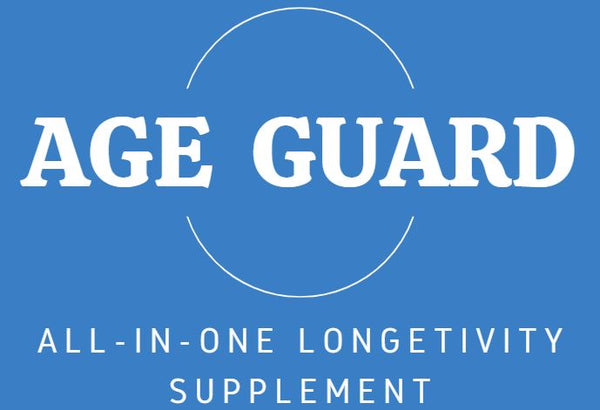What is NAD+? Understanding its Role in Health
Share
NAD+ is at the heart of how your cells stay alive and keep working. Experts say NAD+ is found in every cell in your body, quietly keeping the lights on for your energy, DNA repair, and defenses against stress. Most people think energy loss and slow recovery just come with aging but science points straight at falling NAD+ levels as a hidden reason. When you realize your body’s decline could be tied to just one molecule, it sparks a whole new question about what really matters for staying healthy and sharp.
Table of Contents
- What Is Nad+ And Its Basic Function?
- Why Nad+ Matters For Longevity And Health?
- How Nad+ Works At A Cellular Level
- Key Concepts And Benefits Of Nad+ For Wellness
Quick Summary
| Takeaway | Explanation |
|---|---|
| NAD+ is essential for cellular energy | It facilitates the production of ATP, vital for cell function and metabolism. |
| NAD+ supports DNA repair mechanisms | It activates enzymes that repair DNA, which is crucial for cell integrity and longevity. |
| Aging reduces NAD+ levels | A natural decline in NAD+ as we age can impair cellular health and metabolism. |
| NAD+ enhances stress resistance | It helps cells manage oxidative stress and inflammatory responses, promoting overall resilience. |
| Maintaining NAD+ can improve health | Optimal levels contribute to better immune function and metabolic efficiency, thus supporting long-term wellness. |
What is NAD+ and Its Basic Function?
NAD+ represents a critical molecule that plays an essential role in maintaining cellular health and supporting fundamental biological processes. Short for nicotinamide adenine dinucleotide, this coenzyme exists in virtually every cell in the human body and serves as a molecular workhorse driving numerous metabolic reactions.
The Cellular Energy Powerhouse
At its core, NAD+ functions as a vital electron transfer agent, enabling critical biochemical transformations that generate energy and support cellular metabolism. Research from the National Institutes of Health reveals that NAD+ acts like a cellular battery, shuttling electrons between molecules and facilitating chemical reactions necessary for survival.
The primary functions of NAD+ include:
- Powering mitochondrial energy production
- Supporting DNA repair mechanisms
- Regulating cellular communication
- Maintaining healthy metabolic processes
Biological Significance and Molecular Mechanics
Understanding NAD+ requires recognizing its dual forms: NAD+ (oxidized) and NADH (reduced). This dynamic transformation allows NAD+ to participate in complex biochemical processes. When NAD+ accepts electrons, it becomes NADH, which then transfers those electrons through the cellular energy production system.
Here is a comparison table describing the dual forms of NAD+ and their roles in cellular function.
| Form | State | Role in the Cell |
|---|---|---|
| NAD+ | Oxidized | Accepts electrons to become NADH; enables metabolism |
| NADH | Reduced | Donates electrons in energy production pathways |
As humans age, natural NAD+ levels decline, potentially impacting cellular performance and overall metabolic efficiency. This reduction can influence critical biological pathways related to aging, energy metabolism, and cellular resilience. Maintaining optimal NAD+ levels becomes increasingly important for supporting long-term cellular health and potentially mitigating age-related metabolic challenges.
By serving as a critical cofactor in enzymatic reactions, NAD+ enables fundamental life-sustaining processes that occur continuously within our cells, making it an indispensable molecule for human biological function.
Why NAD+ Matters for Longevity and Health?
NAD+ represents more than just a cellular molecule—it is a fundamental guardian of health and potential key to understanding aging processes. While its primary role involves energy metabolism, NAD+ plays a sophisticated part in maintaining cellular integrity and promoting long-term physiological resilience.
Cellular Repair and Resilience Mechanisms
The connection between NAD+ and longevity stems from its critical involvement in DNA repair and cellular stress management. Research from the National Institutes of Health demonstrates that NAD+ activates sirtuins, a family of proteins responsible for regulating cellular health, stress resistance, and genomic stability.
Key protective functions of NAD+ include:
- Activating DNA repair enzymes
- Reducing inflammatory responses
- Supporting mitochondrial function
- Protecting against oxidative stress
- Enhancing cellular communication
Metabolic Regulation and Aging
As humans age, NAD+ levels naturally decline, creating a cascade of potential metabolic disruptions. This reduction impacts critical biological processes that maintain cellular efficiency and overall health. The progressive decrease in NAD+ can compromise cellular energy production, DNA repair mechanisms, and the body’s ability to manage metabolic challenges.
The intricate relationship between NAD+ and aging suggests that maintaining optimal levels could potentially slow down certain age-related decline mechanisms. By supporting fundamental cellular processes, NAD+ emerges as a promising avenue for understanding and potentially mitigating the biological aging process.
Through its multifaceted roles in cellular metabolism, stress response, and genetic regulation, NAD+ represents a critical molecule that bridges our understanding of health, aging, and cellular longevity.
How NAD+ Works at a Cellular Level
The intricate cellular mechanisms of NAD+ reveal a sophisticated system of metabolic regulation and energy management that underpins fundamental biological processes.
Understanding these molecular interactions provides insight into how this critical coenzyme supports cellular health and function.
Electron Transfer and Energy Production
Research from the National Institutes of Health highlights NAD+'s primary role in mitochondrial function through oxidative phosphorylation. This complex biochemical pathway enables cells to generate ATP, the primary energy currency that powers cellular activities.
The electron transfer process involves several key steps:
- Accepting electrons from metabolic substrates
- Transporting electrons through enzymatic pathways
- Converting nutrients into usable cellular energy
- Maintaining redox balance within cellular environments
Enzymatic Interactions and Cellular Signaling
NAD+ serves as a critical cofactor for multiple enzyme families, particularly sirtuins and poly(ADP-ribose) polymerases (PARPs). These enzymes play crucial roles in cellular maintenance, including DNA repair, gene expression regulation, and stress response management.
The dynamic interplay between NAD+ and these enzymes enables complex cellular communication and adaptive mechanisms. By modulating protein activity and genetic expression, NAD+ helps cells respond effectively to environmental challenges and metabolic demands.
Explore our guide on cellular health boosters to understand how NAD+ contributes to broader wellness strategies.
Through its multifaceted molecular interactions, NAD+ emerges as a fundamental coordinator of cellular metabolism, bridging energy production, genetic regulation, and adaptive cellular responses.
Key Concepts and Benefits of NAD+ for Wellness
The pursuit of optimal wellness hinges on understanding cellular mechanisms that support long-term health and vitality. NAD+ emerges as a pivotal molecule with wide-ranging implications for holistic well-being, offering profound potential in supporting physiological resilience and age-related cellular maintenance.
Comprehensive Wellness Support
Research from the National Institutes of Health indicates that increasing NAD+ availability contributes to reduced inflammation and enhanced metabolic stress resistance. This molecular approach to wellness transcends traditional health strategies by targeting foundational cellular processes.
Key wellness benefits of maintaining optimal NAD+ levels include:
Below is a summary table organizing the main wellness benefits of maintaining optimal NAD+ levels for easier reference.
| Wellness Benefit | Description |
|---|---|
| Enhanced metabolic efficiency | Supports better energy utilization and metabolic health |
| Improved cellular energy production | Boosts creation of ATP, vital for cell function |
| Stronger DNA repair mechanisms | Helps maintain genetic stability and longevity |
| More robust immune system response | Aids defense against illness and stress |
| Better neurological function | Supports brain health and cognitive performance |
| Increased resistance to oxidative stress | Protects cells from damage due to free radicals |
- Enhanced metabolic efficiency
- Improved cellular energy production
- Stronger DNA repair mechanisms
- More robust immune system response
- Better neurological function
- Increased resistance to oxidative stress
Preventative Health and Longevity Strategies
NAD+ represents more than a supplement—it is a potential cornerstone of proactive health management. By supporting critical cellular functions, NAD+ helps mitigate age-related decline and promotes physiological resilience. Its role extends beyond immediate wellness, potentially influencing long-term health trajectories.
Learn more about cellular health optimization and understand how targeted molecular interventions can transform your wellness approach.
Through its intricate mechanisms, NAD+ demonstrates the sophisticated interplay between molecular biology and holistic health, offering a promising frontier in understanding and supporting human physiological well-being.

Take Control of Your Cellular Health with Research-Backed Solutions
If you are concerned about declining NAD+ levels and want to support your body’s natural energy, repair, and longevity mechanisms, you are not alone. As the article explains, decreases in NAD+ can negatively impact how your cells perform, which might affect your resilience and how you age. Many people are searching for real, science-backed solutions because they want to protect their energy and stay healthy as they get older.

Ready to take a science-based step toward better wellness? Explore MyAgeGuard.com, where you will discover how our unique formula, with NMN, collagen, spermidine, and powerful antioxidants, is designed to replenish NAD+ and help your cells thrive. See the data, read real reviews, and find out how you can start supporting your cellular health for long-term benefits. Take action now and join others who have made their health and longevity a top priority. Learn more and shop the collection at MyAgeGuard.com or browse our cellular health optimization guide for the latest wellness strategies.
Frequently Asked Questions
What is NAD+ and what does it do?
NAD+, or nicotinamide adenine dinucleotide, is a coenzyme essential for cellular health. It plays a key role in energy metabolism, DNA repair, and regulating cellular communication.
How does NAD+ contribute to cellular energy production?
NAD+ functions as an electron transfer agent during cellular respiration, allowing cells to generate ATP, the primary energy currency that powers cellular activities.
What impact does aging have on NAD+ levels in the body?
As people age, NAD+ levels naturally decline, which can lead to reduced cellular efficiency, impaired DNA repair, and a decrease in metabolic processes critical for health.
How can maintaining NAD+ levels benefit overall health and longevity?
Keeping optimal NAD+ levels can enhance metabolic efficiency, improve DNA repair mechanisms, boost immune response, and potentially mitigate age-related decline, promoting long-term health and resilience.
